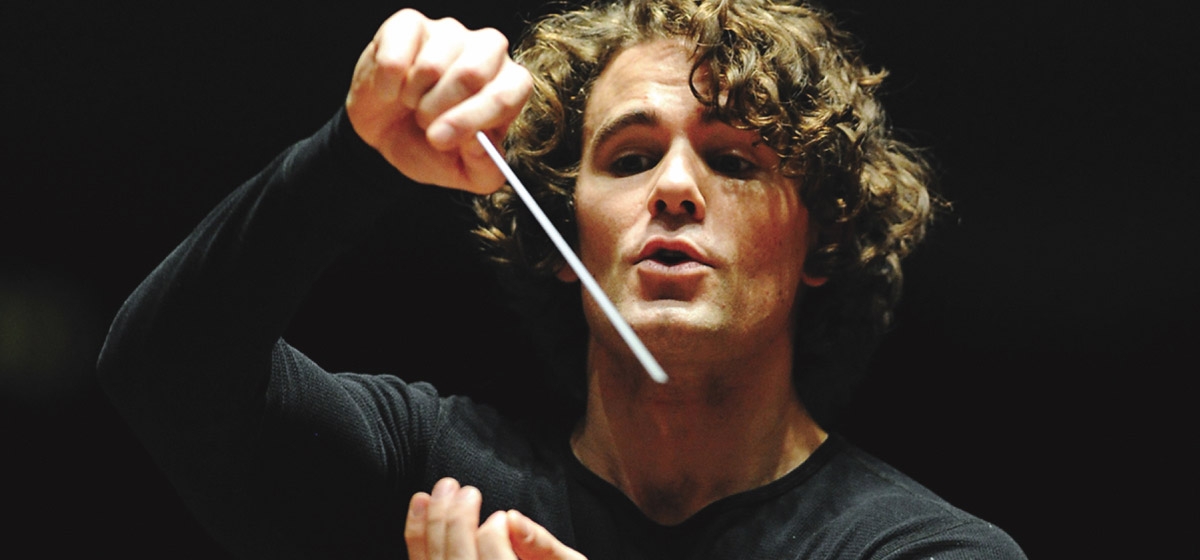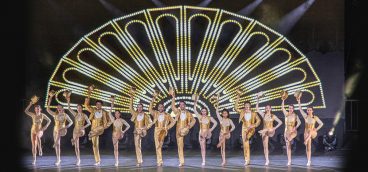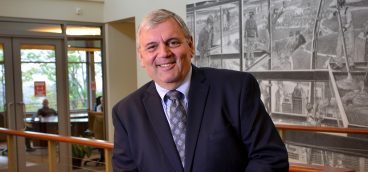
Steve Hackman, 35, is an emerging phenomenon in the world of music, fusing classical and popular pieces. Hackman is creating and conducting his hybrid concerts with the Pittsburgh Symphony Orchestra Jan. 27 and March 9. A native of suburban Chicago, he has an undergraduate degree in piano performance from the University of Illinois Urbana-Champaign and a diploma in orchestral conducting from Philadelphia’s Curtis Institute of Music. Hackman sat down with Pittsburgh Quarterly for a Q & A on his creations.
Q. You’re becoming well known for your musical “mash-ups” combining, for instance, Beethoven with Coldplay and Brahms with Radiohead. What is a mash-up?
A. I would like to be well known for pioneering a new hybrid orchestral experience. Mash-ups are the first in what I hope are a series of new techniques I’ll develop for re-contextualizing the core classical repertoire and modernizing the classical musical experience. Really, it’s about creating connections between classical and popular repertoire, and, for me, it becomes a mode of personal expression. I’m taking two seemingly disparate sources and creating something completely new. It would have elements of Coldplay and of Beethoven, but the new piece—the sum of the parts—is something that I have an emotional connection to. I’ve always been passionate about classical and popular music in parallel. For everything I could list on the classical side—conducting, orchestrating, piano, counterpoint—there is a counterpart on the popular side I’ve pursued with equal fervor—producing, recording and songwriting.
Q. How do you go about fusing two disparate types of music, and how do you choose what to fuse? Are some more combinable than others?
A. I understand that everyone else probably sees these things as disparate, without overlap and not having anything in common. I do not see it that way. I don’t react to music that way. Because I’ve had the parallel paths of popular and classical music, I feel like I’ve known my whole life that it just boils down to the same notes. It’s other people who want to box them and categorize them. I understand they’re different genres and that, of course, they have dissimilarity. But it’s very natural for me to break them down to their fundamental parts and then to mix them together.
The process of choosing the artist and the classical piece is paramount. And I give considerable thought to that. But really, no matter what you choose, you’re choosing a problem, and then it’s up to you to create a solution. What kind of problem am I going to choose for myself? Every pairing presents a different challenge. Some pairings could be effortless emotionally, yet musically they could be very difficult to make work. And some could be the opposite. There could be many musical similarities, but the emotional color is too dissimilar. So maybe you don’t take that on. These are the things I weigh when considering what pairings to choose. I have a running list of favorites on both sides and a running list of potential mash-up ideas as well.
Once you choose the pairing, then you’re ready to start. And that’s when it gets hard. You have to choose the popular songs that you’re going to attempt to imbed in the classical work. And then you have to find possible juncture points. That’s when it gets tricky.
Q. How do symphony orchestras like mash-ups? Are they excited? Is it difficult for them to learn and adapt?
A. It’s some of both. I think mash-ups are certainly met with mixed reviews from both the public and the musicians. And I understand that. You’re taking a piece of music—a treasure, a masterpiece that’s been played the same way for a century, maybe two. You’re unlocking it, rearranging it and combining it. And you’re combining it with music that most people would say you should never combine it with. So I understand skepticism as a concept.
From the players’ perspective, I hope that once they get in and play it, they can see it’s been done with care and thought and creativity. But I have to say I’m super realistic with this. You’re never going to please everyone. I know a lot of the orchestral players love it. I know a lot of them hate it. Period.
Q. What are the biggest influences on you musically?
A. There are so many, but these days I think about people like Leonard Bernstein—such an American pioneer, educator and great thinker. Then I think of George Martin, producer of the Beatles who brought their music to life. Richard Wagner—who completely changed forever the concept of what opera could be and what classical music could be, which is kind of what I’m trying to do. And I think of Quincy Jones. His vision and ability to create the right concept and framework for unbelievable talent extended far beyond music; you’re talking from Michael Jackson to the “Fresh Prince of Bel Air” to Frank Sinatra. I’m really influenced right now by visionaries. I’m reading the Steve Jobs book. I think there’s a lot to learn there—someone who is fearless, has vision and who wouldn’t quit.
Q. At what age did you realize that music would be so important in your life and career?
A. I realized music was going to be important in my life much sooner than in my career. I won’t say it’s the earliest memories I have, but I found a cassette tape of Chopin my father had when I was maybe 9 (I started playing piano at 8). He also had a record set of Toscanini conducting all of Beethoven’s symphonies, and I would play them and dance around the house. I didn’t come from a musical family, he just had these records and I found them. With so many early memories of music, I can remember where I was and what I was doing when I first heard them—it’s very vivid, and the music just connected to me, to the core of who I am.
In terms of career, my junior year of high school, I made the all-state choir in Illinois, and hundreds of students went to Peoria to take part. The conductor was fantastic, and the way all these talented young passionate students were coming together under her direction and collaborating to make this beautiful sound was extremely meaningful to me. That was the moment I knew I wanted to pursue music for my career.
Q. As you moved on in traditional music and trained to be a conductor, I’ve heard that you were conflicted philosophically about the work and your role. Can you discuss that?
A. The farther down the road of the classical elite I traveled, the more and more distant I felt from contemporary popular society. The reason I got into music is to feel connected to my peers and to feel connected to our time. And this was very distressing to me. When I graduated from Curtis 11 years ago, I was 24. I got a fast start in the conducting world. I went to the American Academy of Conducting at Aspen Academy and was sort of on my way, you could say. But I had too much of a love for connecting to audiences, and I saw that the classical world wasn’t doing that. So I changed paths.
Q. There probably wasn’t a clear path. How did you make the change?
A. That’s one of the most difficult things I’ve ever done. A very reputable classical organization—a catapult for young conductors—called me nine years ago and said they’d like me to come. And I said no. That was the call I’d been waiting for 10 years. All through Curtis, that was the job that I wanted, and it was a matter for waiting for it to open up. You’ve still got to go win the job, but when they called, I declined to interview. That was the moment I knew “This is for real, I’m leaving this.” The path since has been so difficult but so ultimately worthwhile, and I feel I’m just at the beginning.
Q. What can audiences expect in your Jan. 27 and March 9 concerts?
A. January is a mash-up of Copland’s “Appalachian Spring” and the music of Bon Iver. Both are beautifully evocative of nature and setting and the relationship between man and nature. So that’s just a wonderful, tranquil and almost meditative mash-up. Really changing gears, the March show will be a live remix of Stravinsky’s “Firebird.” The orchestra will play the entire piece, juxtaposed with interludes of DJ and remix material. I’m just starting to conceive it. The possibilities are astounding, and I can’t wait to create it.
Q. How long have you been living in Pittsburgh, and what’s your impression of the city?
A. I’ve been here since April 1, [2015], but wasn’t here all summer. So I’m very new to the city. I’m overwhelmed with the number of creative, entrepreneurial and innovative thinkers I’ve come in contact with so quickly. I came here from New York City, and it’s been so effortless and so natural to connect with these exciting, enterprising individuals. And I have felt fully supported and endorsed by them. The symphony is of course a part of this. They’re such an established and cherished brand and entity in this community. That makes me look good. And everyone wants to see the symphony succeed here. But everyone also wants to see new ideas here and wants Pittsburgh to be a national leader in innovation and new thinking. That’s blowing me away.
Q. Is there anything you’d like to add?
A. Most of my friends love music, but they love pop music. They don’t love classical. To use a literary comparison, it’s not as if they’re reading Tolstoy but not Dostoevsky. It’s as if they’re only reading short stories and never reading novels. They’re never hearing Mahler’s Second Symphony and only knowing 3- or 4-minute pop songs. I’m not casting any judgments. I’m just saying you also need to read Faulkner and James Joyce. I’ll always be an advocate for classical music, because I’m sure that if somebody loves Pink Floyd so much that they know every single track of “Dark Side of the Moon” in order, I’m positive I can get them hooked on classical music.
That being said, the mash-up shows and all the other techniques I’ll hopefully develop aren’t gimmicks. They’re truly modes of personal expression. That is what a composer’s charge is—or any author—to share in a unique way his or her unique perspective.





